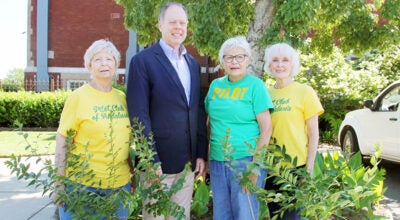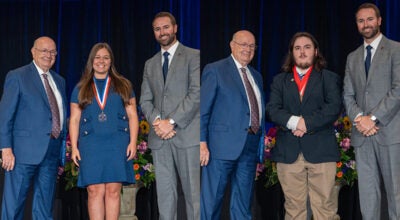Hyperbaric oxygen treatments offered at new Wound Care Center
Published 12:05 am Thursday, June 13, 2013
Andalusia area residents now have access to a new treatment for healing chronic wounds.
The Advanced Wound Care Center at Andalusia Regional Hospital opened this month, giving patients access to hyperbaric oxygen therapy (HBOT).
Clinical director Michael Byars explained that in HBOT, patients breathe 100 percent oxygen under pressure. Typically, treatments are 90 minutes daily, five days per week.

Michael Byars and Nick Marcotte with one of two hyperbaric oxygen therapy chambers at the new Wound Care Center at ARH.
The pressure causes the oxygen to diffuse into the blood plasma, which then delivers 10 times the normal supply of oxygen to damaged tissue.
While patients are inside a chamber for the treatment, they can communicate with technicians. A television is placed atop the chamber for easy viewing.
Byars said officials in the Wound Care Center expect to primarily see patients with diabetic wounds and pressure ulcers. However, HBOT also can be therapeutic for burns.
“We saw a 6-year-old boy yesterday,” Byars said. “He was a little scared, but by the time he left, he was calling me ‘Grandpa.’ ”
Byars became an RN at age 40, and has worked in a number of areas at Baptist Hospital in Montgomery, including as a wound care nurse. Most recently, we was a wound care consultant for 35 nursing home and rehab centers located in Georgia, Tennessee, Alabama, Mississippi, Louisiana, Illinois and Missouri.
He and his wife, Susan, followed their daughter, Mary Michael Bozeman, to Andalusia.
Similarly, Nick Marcotte of Crestview, followed his brother, a nurse, to Andalusia. Marcotte worked as a surgical tech in the Navy for six years and currently is enrolled in LBW’s paramedic program.
Both men said that patients can self-refer to the center, but it is the center’s policy to consult with a patient’s primary care physician.
“We also work with patients on lifestyle, diet and activities,” Byars said. “We look at habits like smoking and drinking and how it affects wound healing.”
They consider an extensive medical history, he said, and refer patients to specialists if they believe non-healing of a wound has an underlying cause.



